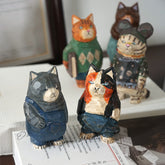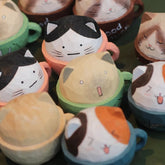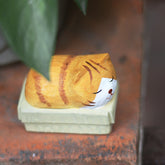Find the Right Carving Knife for Crafting Wooden Gifts
When we make wooden gifts by hand, after sawing the excess wood we come to the real part of carving. As the longest and most important tool, it is essential to choose your carving knife carefully. There is no such thing as a perfect knife, but there is always a knife for you. If you want to choose an engraving knife that suits you better, we have summarized six guidelines for your reference:
- I want this knife to be more efficient.
- I want to use it with less effort.
- I want it to cut more accurately.
- I want the knife to be easier to sharpen.
- I want it to stay sharp longer.
- I want it to be more comfortable to hold.

These needs determine the shape, size, steel, thickness, angle, and handle of the knife.
Let's look at these perspectives and learn more about these complicated looking carving knives in making wooden gifts.

Blade Shape of Wooden Gift Carving Tools
First, the first thing we see is the shape of the knife. If you're looking for a chef's knife, we suggest that a straight blade is more appropriate, as a straight blade cuts more precisely and has a shorter cutting path than a curved blade, which means less effort.

This is shown in the picture when cutting with a straight-edged knife. A curved blade knife requires more wrist movement because it cuts a longer path per unit, so more force is needed if you want to cut all the way through.

The curved edge also includes both types of pelican knives.

The Pelican knife is also a good choice if you need to make a concave texture when carving a wooden gift like the white cloud in the picture.

Blade Size for Wooden Gift Carving Tools
The size of the blade is generally determined by the size of the wooden gift you are carving, you would use a small knife to carve a large wooden figurine, and you would not use a large knife to carve a very small wooden ornament. For wooden objects of 5-15 centimeters, we recommend a blade length of 3.5-5 centimeters. This size of blade can be used both for cutting large pieces and for making small adjustments to details. Of course, you can also use a larger knife to sharpen the contours, which is faster, and a smaller knife to adjust the details, which is more precise, each to its own advantage.











